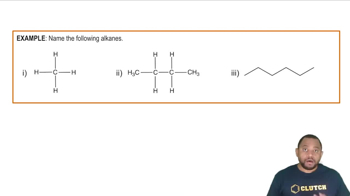Textbook Question
What are the IUPAC names of the following alkanes?
f.
1624
views
 Verified step by step guidance
Verified step by step guidance Verified video answer for a similar problem:
Verified video answer for a similar problem:



 :54m
:54mMaster Rules for Naming Alkanes with Substituents Concept 1 with a bite sized video explanation from Jules
Start learning